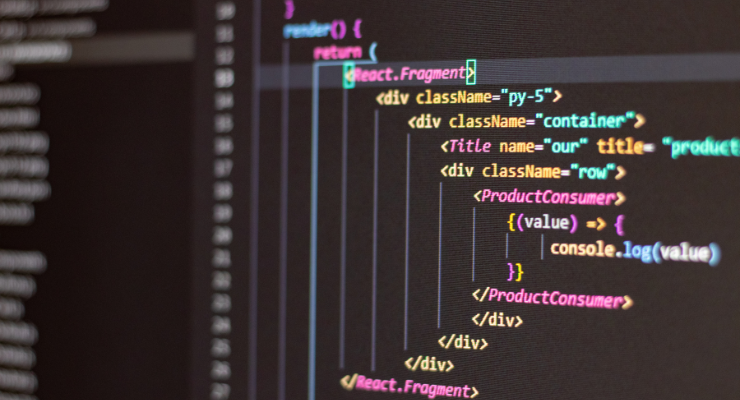
Enhancing Your Website with Custom Code and Widgets: Best Practices and Insights
Enhancing Your Website with Custom Code and Widgets: Best Practices and Insights
Custom code and widgets are powerful tools that can significantly enhance the functionality and user experience of your website. Whether you're looking to add interactive features, improve site performance, or integrate third-party services, understanding how to effectively use custom code and widgets is essential. In this blog post, we'll explore the theory and best practices for adding custom code and widgets to your website, providing insights beyond the step-by-step process outlined in our comprehensive guide.

Why Custom Code and Widgets Matter
Incorporating custom code and widgets into your website can offer numerous benefits, from enhancing functionality to improving user engagement. Here’s why they matter:
Enhanced Functionality: Custom code allows you to add unique features and functionalities that may not be available through standard plugins or themes.
Improved User Experience: Widgets can make your website more interactive and user-friendly, providing valuable information and tools for visitors.
Increased Flexibility: Custom code offers the flexibility to tailor your website to your specific needs and preferences.
Integration with Third-Party Services: Widgets and custom code enable seamless integration with third-party services, such as social media feeds, analytics, and payment gateways.
For businesses looking to optimize their website design, Ad Ronin offers digital marketing solutions that include custom code and widget integration strategies.
Key Considerations for Adding Custom Code and Widgets
Adding custom code and widgets to your website requires careful planning and execution. Here are some key considerations:
1. Identifying Your Goals
Before adding custom code or widgets, it's essential to identify your goals. Understanding what you want to achieve will guide your customization efforts:
Enhance User Interaction: Are you looking to add interactive elements, such as forms, sliders, or chatbots?
Improve Site Performance: Do you want to optimize loading times, enhance security, or streamline navigation?
Integrate Third-Party Services: Are you aiming to connect your website with social media, analytics, or e-commerce platforms?
Defining clear objectives will help you choose the right custom code and widgets to meet your needs.
2. Choosing the Right Tools
Selecting the appropriate tools and technologies is crucial for successful customization. Here’s how to make informed choices:
Evaluate Compatibility: Ensure that the custom code or widgets you choose are compatible with your website's platform and existing plugins.
Consider Ease of Use: Look for tools that are easy to implement and manage, especially if you have limited coding experience.
Check for Support and Updates: Opt for tools that offer regular updates and reliable support to address any issues that may arise.
Example: Popular tools like Google Analytics, Mailchimp, and social media widgets can be easily integrated into most websites to enhance functionality and engagement.
For a detailed guide on adding custom code and widgets, refer to our step-by-step workflow.
3. Implementing Custom Code and Widgets
Once you've chosen the right tools, it's time to implement them effectively. Here are some best practices:
Use a Child Theme: If you're working with a WordPress site, use a child theme to add custom code. This ensures that your changes are not overwritten during theme updates.
Follow Best Practices: Adhere to coding standards and best practices to ensure your custom code is clean, efficient, and maintainable.
Test Thoroughly: Before deploying custom code or widgets on your live site, test them in a staging environment to identify and resolve any issues.
Example: When adding a custom JavaScript widget, ensure it's loaded asynchronously to avoid impacting your site's loading time.
4. Monitoring and Maintenance
Continuous monitoring and maintenance are essential to ensure your custom code and widgets function correctly over time:
Regular Updates: Keep your custom code and widgets up to date with the latest versions and security patches.
Monitor Performance: Use tools like Google PageSpeed Insights to monitor your site's performance and identify areas for improvement.
Seek Feedback: Gather feedback from users to understand how the custom features are performing and make necessary adjustments.
For more information on maintaining and optimizing your website, explore our digital marketing blog.

Practical Example: Adding a Custom Widget to a Blog
Let’s explore a practical example of how to add a custom widget to a blog:
Imagine you run a travel blog and want to add a custom Instagram feed widget to showcase your latest travel photos. Here's how to approach it:
Choose a Widget Tool: Select a tool like Smash Balloon's Instagram Feed plugin, which offers customizable Instagram widgets.
Customize the Widget: Configure the widget to match your blog's design, choosing the layout, colour scheme, and display options.
Implement the Widget: Add the widget to your blog's sidebar or footer using the provided shortcode or widget settings.
Test and Monitor: Ensure the widget displays correctly on all devices and monitor its performance to maintain optimal functionality.
By implementing these strategies, you can enhance your blog's visual appeal and engagement.
For a detailed guide on adding custom code and widgets, explore our step-by-step workflow.
Conclusion: Elevate Your Website with Custom Code and Widgets
Adding custom code and widgets to your website is a powerful way to enhance functionality, improve user experience, and integrate third-party services. By understanding the theory and best practices, you can implement custom features that align with your goals and add significant value to your site.
At Ad Ronin, we provide comprehensive web design and digital marketing services to help you integrate custom code and widgets into your website effectively. Contact us today to learn more about how we can support your digital strategy.
For further insights and a step-by-step guide on adding custom code and widgets, check out our workflow.

